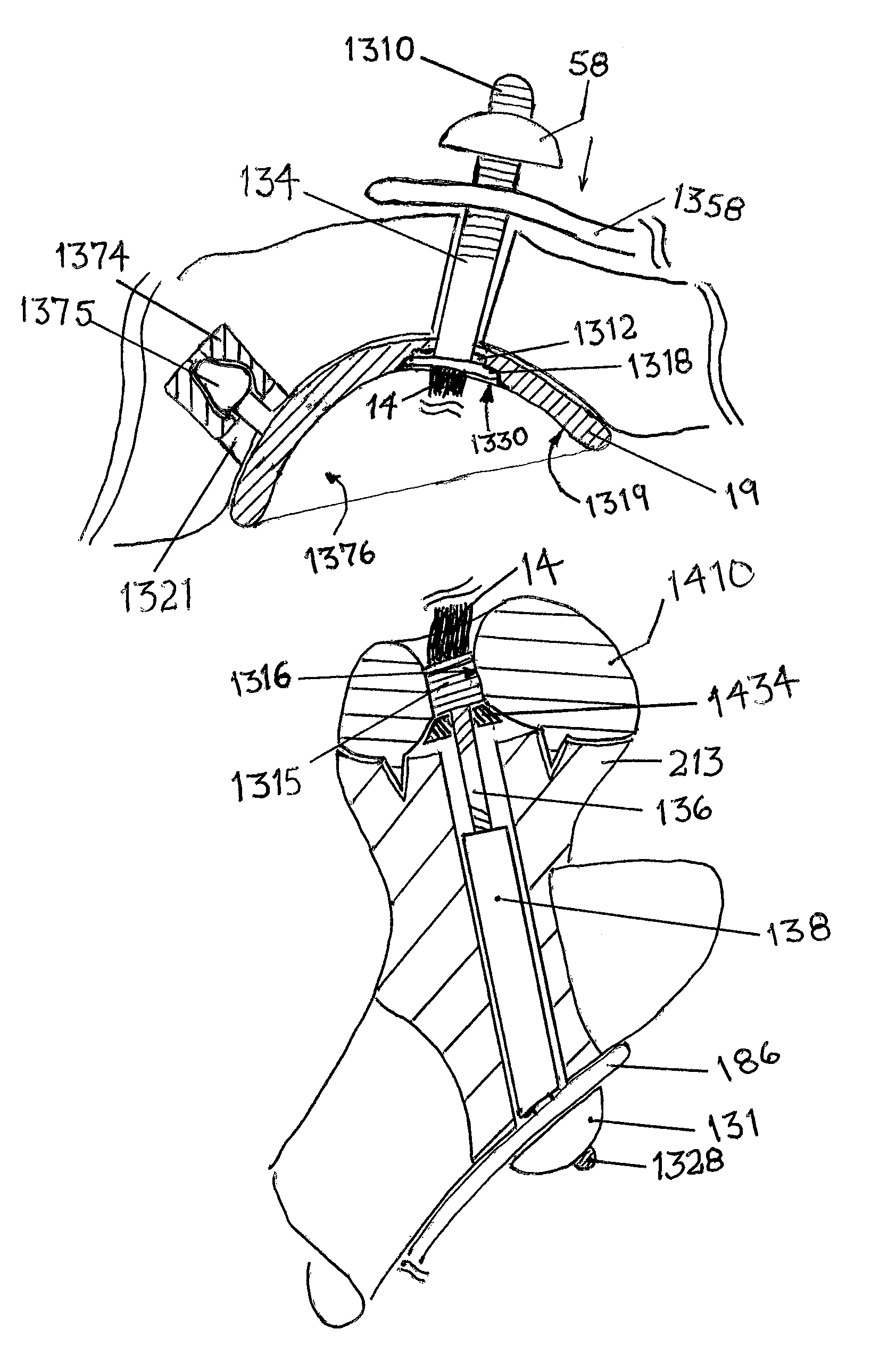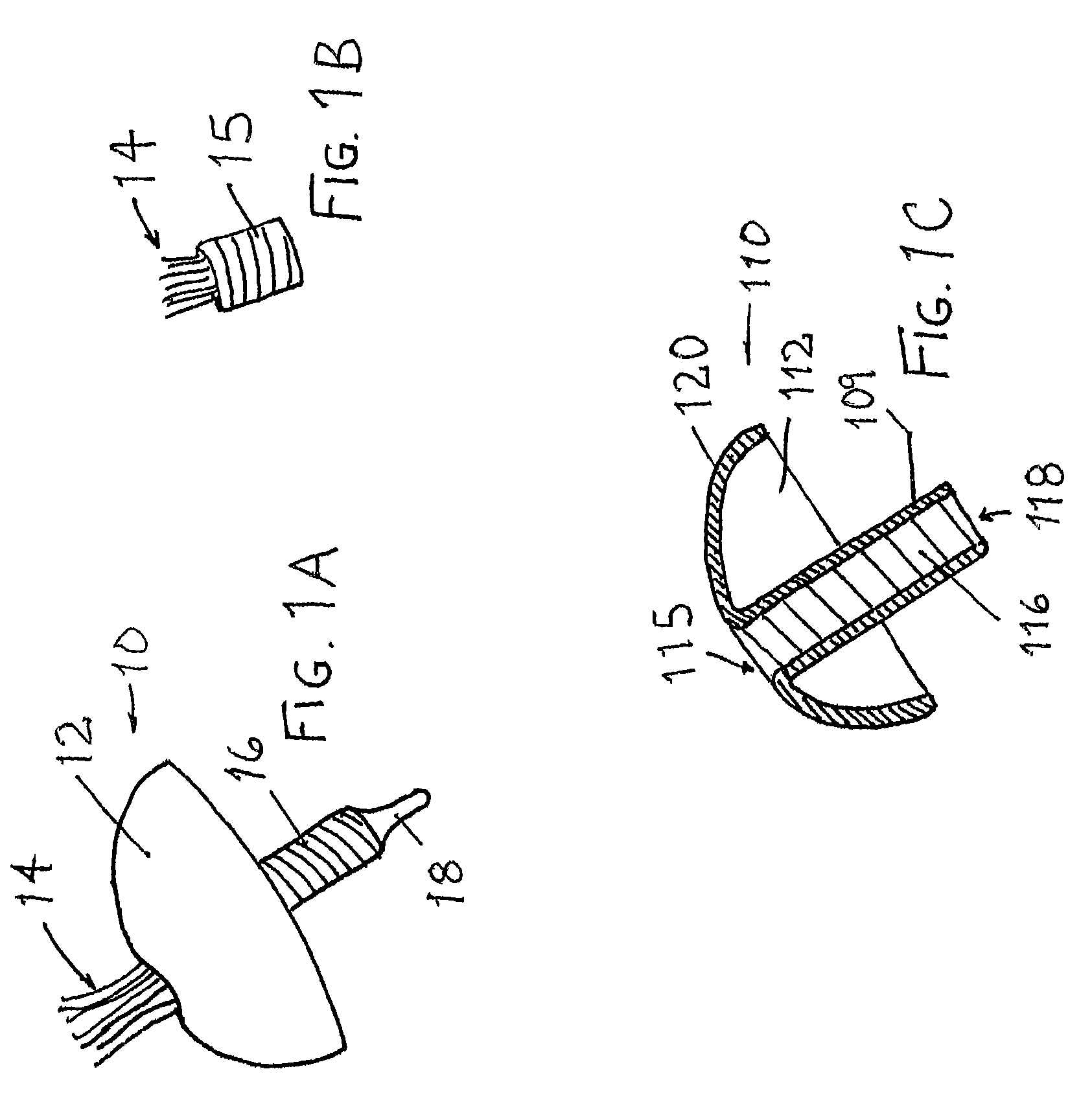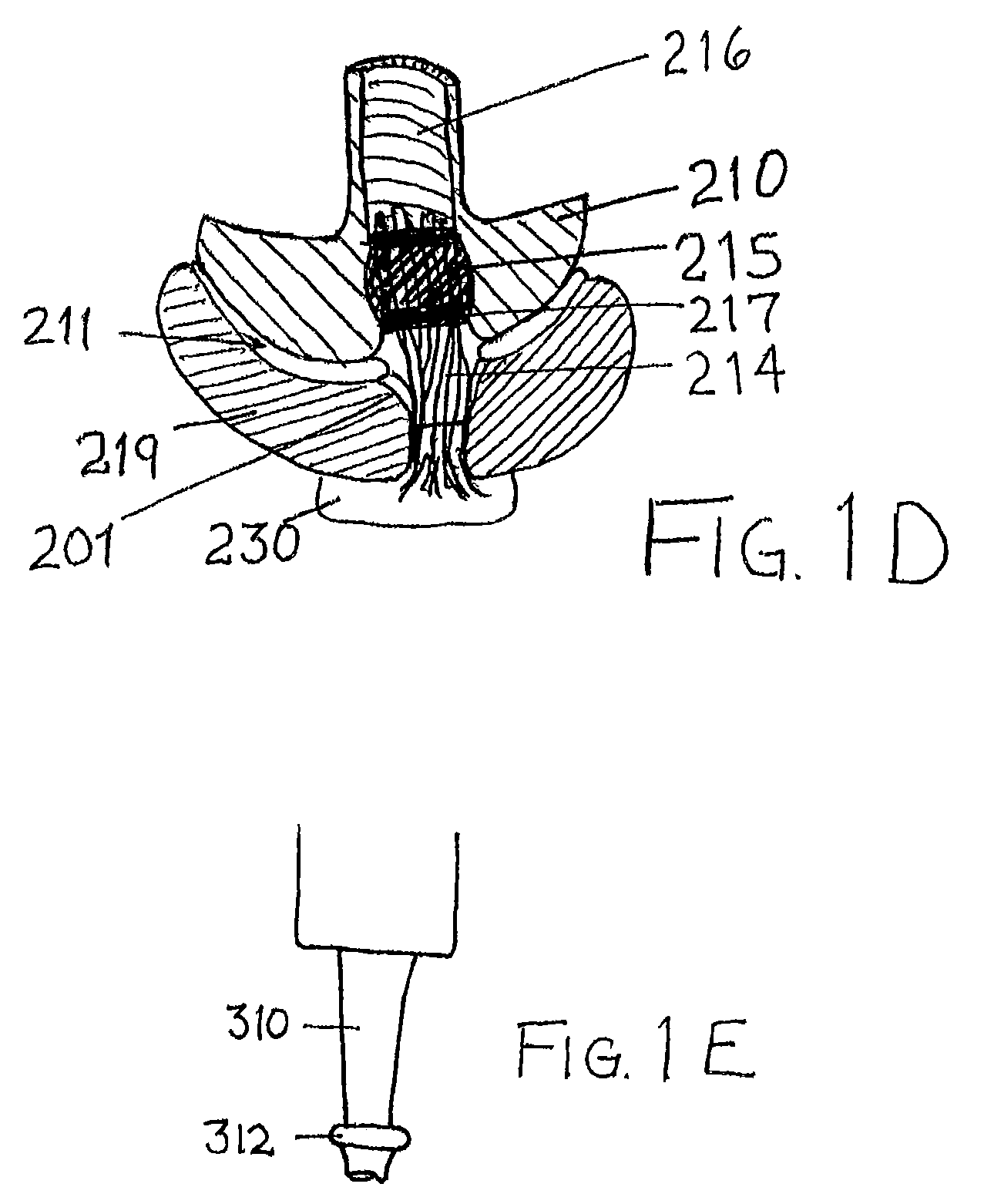Socket and prosthesis for joint replacement
a joint replacement and socket technology, applied in the field of orthopaedics and repair, can solve the problems of large fraction of joint replacement surgeries failing, ball joints and load bearing structures are often damaged, and none of them meet the needs of an aging and increasingly overweight population, and achieve the effect of preventing bone loss
- Summary
- Abstract
- Description
- Claims
- Application Information
AI Technical Summary
Benefits of technology
Problems solved by technology
Method used
Image
Examples
Embodiment Construction
The examples described and drawings rendered are illustrative and are not to be read as limiting the scope of the invention as it is defined by the appended claims. Many variations in the system, changes in specific components of the system and uses of the system will be readily apparent to those familiar with the area based on the drawings and description provided.
In one example, the attachment of the shell, itself, is made by a conventional process, which fixes the shell using lag screws to the bone of a patient. The shell may be located anatomically on a supporting structure or may be reversed and located on a long bone of the patient, such as done in some shoulder replacement procedures. In either alternative, a ball and shell unit is inserted, and the shell holding the ball is fixed to the underlying bone, while the ball is capable of articulated motion within the shell and is attached to a free end of a prosthesis fixed to another bone of the patient.
The example of FIG. 1A sho...
PUM
 Login to View More
Login to View More Abstract
Description
Claims
Application Information
 Login to View More
Login to View More - R&D
- Intellectual Property
- Life Sciences
- Materials
- Tech Scout
- Unparalleled Data Quality
- Higher Quality Content
- 60% Fewer Hallucinations
Browse by: Latest US Patents, China's latest patents, Technical Efficacy Thesaurus, Application Domain, Technology Topic, Popular Technical Reports.
© 2025 PatSnap. All rights reserved.Legal|Privacy policy|Modern Slavery Act Transparency Statement|Sitemap|About US| Contact US: help@patsnap.com



